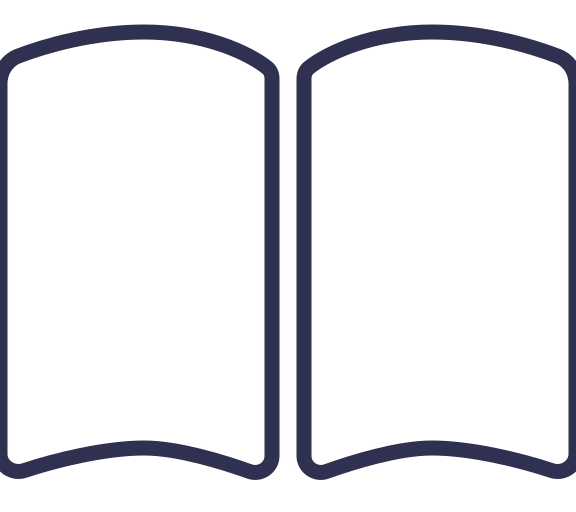How tall is that maple tree? If you think about it, it is not obvious how to measure the height of a tree. We could measure to the highest leaf, but it seems odd to say that the tree is shorter if a leaf falls off. Or we could measure to the top of a branch, but it might bend lower in the wind. Or we could measure to the top of a thick enough branch, whatever that means. The point is that we don’t know how to measure the height of a tree that precisely. By the way, the word
precisely refers to the number of decimal digits.
Could the maple tree be 93.2 feet tall? No way. That’s too precise. Is 93 feet tall correct? Maybe, but we could be off by a couple of feet depending on where we measure. Perhaps we can hedge slightly and call it 95 feet tall. Hopefully that’s reasonable. Or maybe we should play it really safe and say it is not quite 100 feet tall. The point is: there is no such thing as “the” right answer. When we ask a real world question, we want a real world answer.
The answer depends on the question.
While it is good to keep as many digits as possible during calculations, at the end of a problem you should approximate the answer by
rounding – finding the closest number of a given precision. The height of 93.2 feet was likely rounded to the nearest tenth (one decimal place). We rounded to the nearest whole number to get 93 feet. The point is that 93.2 is closer to 93.0 than it is to 94.0, so our answer is 93.0 or 93 feet.
Perhaps this is a good place to mention the notation. We write
\(93.2 \approx 93\) to indicate that we have rounded. The symbol
\(\approx\) means
approximately equal to.
How much to round off the answer depends on the question. To begin you should apply your common sense. Your answer should definitely sound natural, something you might actually say to a friend or your boss. But there’s also one more rule to know:
Your answer should not be more precise than the information in the problem.
For example, suppose we read that the comprehensive fee at a local university is around $23,000 and projected to increase by 12% per year. We want to calculate the comprehensive fee in 4 years. As we’ll learn later in this course, the answer is
\begin{equation*}
36{,}190.945\ldots
\end{equation*}
The dots indicate that we have not copied all the digits from the calculator. We could round to the nearest penny and say “around $36,190.95.” Or, we could round to the nearest dollar and say “around $36,191.” The numbers we are given ($23,000 and 12%) have only two digits that matter, however, so we should actually round off and say “just over $36,000.”
By the way, when we refer to digits that matter, we are really referencing
significant digits. That theory explains how combining numbers influences the number of digits in the answer that are accurate, which is why we wait until our final answer to round. In this text we do not follow those rules exactly, but you should be aware that some areas of study, such as Chemistry, do.
You might be surprised to learn that approximate answers are not only good enough; they are often best. For one thing, in practice we want a round number so it is easy to understand and work with our answer. A rounded answer is just approximate. Also often the numbers we are given in a problem were rounded or approximated – for the record, that fee was really $23,058, not $23,000. When we start with approximate numbers, then no matter how precise the mathematics we use, we can only get approximate answers. Also, in much of this course the methods we will use to calculate answers are, themselves, approximate. We might
suppose that tuition increases exactly 12% each year, when we know in reality that the percent will likely vary. That is an example of using an
approximate model. Last, we might have an actual model but use some numerical or graphical technique for solving. That is an example of using an
approximation technique. In either case, if the model or technique we use is approximate, then our answer can only be either. There is an old saying we try to live by in this course.
I’d rather be approximately right than precisely wrong.
One more subtlety. We have been rounding to the nearest number of a given precision. That process is also known as
rounding off. There are times when we will need to
round up – to the next highest number of a given precision, or
round down – to the next lowest number of a given precision.
For example, during Happy Hour at a local restaurant, buffalo wings sell for 60¢ per wing. Your buddy only has $7. After a quick calculation on his cell phone he decides to order a dozen wings. Your buddy probably calculated
\begin{equation*}
7 \div 0.60 = 11.6666666\ldots \approx 12
\end{equation*}
Trouble is he cannot afford a dozen wings, because they would cost $7.20. (Check \(12 \times 0.60 = \$7.20\text{.}\)) Not to mention the tax, tip, and that beer he drank. Good thing you can point him to the bank machine so he can get cash and you won’t have to pay his tab (again). What’s the trouble here? Besides ignoring tax, tip, and that beer he rounded off when he should have rounded down:
\begin{equation*}
7 \div 0.60 = 11.6666666\ldots \approx 11
\end{equation*}
It should be clear from the story whether you will need to round off, round up, or round down. Again, our mantra is: the answer depends on the question.

